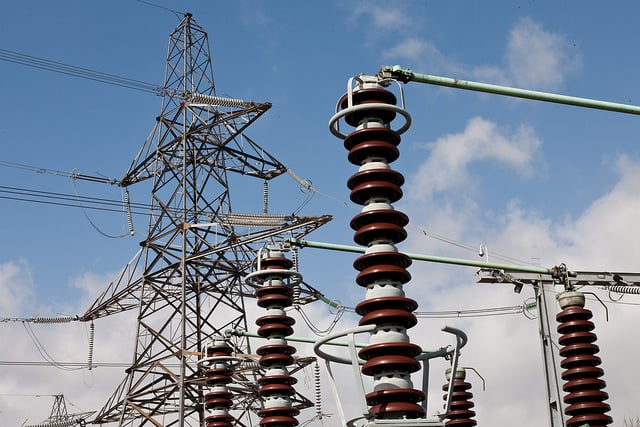The National Energy System Operator (NESO) has published its Clean Power 2030 (CP30) report, advising the government on the steps it needs to take to achieve its 2030 targets.
The advice was formally requested by the Secretary of State for the Department of Clean Energy and Net Zero, Ed Miliband, and CP30 has been formulated with input from industry stakeholders.
CP30 concludes that while it will be a “huge challenge,” clean energy is possible by 2030. The cabinet will now consider the advice developing a clean energy action plan later this year.
NESO uses ‘clean energy’ to describe a scenario in which at least as much energy is generated from clean sources as Britain consumes throughout the year, and in which unabated gas generation accounts for less than 5% of UK generation in a typical weather year .
The report suggests several necessary system, market and infrastructure changes in line with two primary clean energy delivery routes developed by NESO. It also offers two broader sensitivities, which provide a greater degree of deployment of key technologies.
The processes ‘push the boundaries of what is feasible’, but allow flexibility at the margins: onshore wind and solar energy can replace offshore wind energy; more demand-side response could replace batteries; more hydrogen or carbon capture and storage (CCS) could replace most other supply options.
Both ‘pathways’ to clean energy see a doubling of onshore wind capacity from 13 GW in 2023 to 27 GW in 2030 and a tripling of solar capacity from 15 GW to 47 GW in 2030. NESO’s analysis also suggests that battery energy storage capacity should increase from 5 GW in 2023 to 2023. 23-27 GW in 2030.
Long-term energy storage (LDES) is also crucial and will grow from 3 GW in 2023 to 5 – 8 GW in the routes.
Further reporting on CP30 can be found on our sister site, Current±.
Solar Energy UK: CP30 shows “concerns about lack of ambition” for solar energy
While the operator’s suggestions were widely welcomed by industry figures such as John Pettigrew, CEO of National Grid, who called the report a “hugely useful milestone”, the solar and storage sectors are crucial.
Trade association Solar Energy UK said it agrees with NESO’s conclusion that clean energy by 2030 is both feasible and beneficial, and that this will depend on accelerating new transmission infrastructure, reforming planning and consent processes and reforming of the electricity market structures “while ensuring a stable and attractive investment climate”.
However, the trade body said CP30 betrays a “limited understanding” of solar power generation and battery energy storage, leading to a “worrying lack of ambition” for the technologies. The analysis does not have the depth that the trade association expected and states that SEUK had little opportunity to contribute to it.
“Solar Energy UK is deeply concerned that the potential for solar and energy storage is under-exposed in NESO’s Clean Power 30 scenarios and urges the government to ask some deep questions about the assumptions used. It is impossible to see how the growth of rooftop and battery solar in homes, factories and warehouses has been taken into account,” said Chris Hewett, CEO of Solar Energy UK.
Hewett continued: “Solar farms are the cheapest and fastest to deploy energy generation in the country, many with co-located batteries. Yet the NESO scenarios have no deployment range for solar energy at all and a conservative range for batteries. This betrays at best a mistake and at worst a fundamental misunderstanding of their potential.”
The practical measures needed to further accelerate the growth of the solar energy sector will be outlined in the Solar Taskforce’s Solar Roadmap early next year. Miliband recently reconvened the Solar Taskforce, with Hewett at the helm; Solar Energy UK said it looks forward to working with NESO, government and other stakeholders to make clean energy a reality by 2030.
NESO also foresees at least 22.6 GW of battery energy storage by 2030, rising to 27.4 GW in its ‘Further Flex and Renewables’ trajectory, up from 4.7 GW in 2023.
Commenting on the report, Oliver Petterson, communications manager at battery storage company BalancePower, said the publication of CP30 was “great to see”.
He continued: “However, questions are being asked about whether we are putting too many resources into a single set of technologies in the hope that this will eliminate the need for gas in the future – yesterday we saw a gas peak of almost 23 GW of our generation , of which almost 60% is affected by solar and wind energy, is experiencing enormous difficulties due to low wind speeds and low temperatures.”
CP30 recognizes the fact that gas is often used at times when solar and wind energy generation is low, meaning that the deployment of those generation technologies will not have a direct impact on the use of unabated gas.
Petterson suggested that “again” more attention must be paid to energy storage systems of both long and short duration “if we want to achieve grid stability”.


